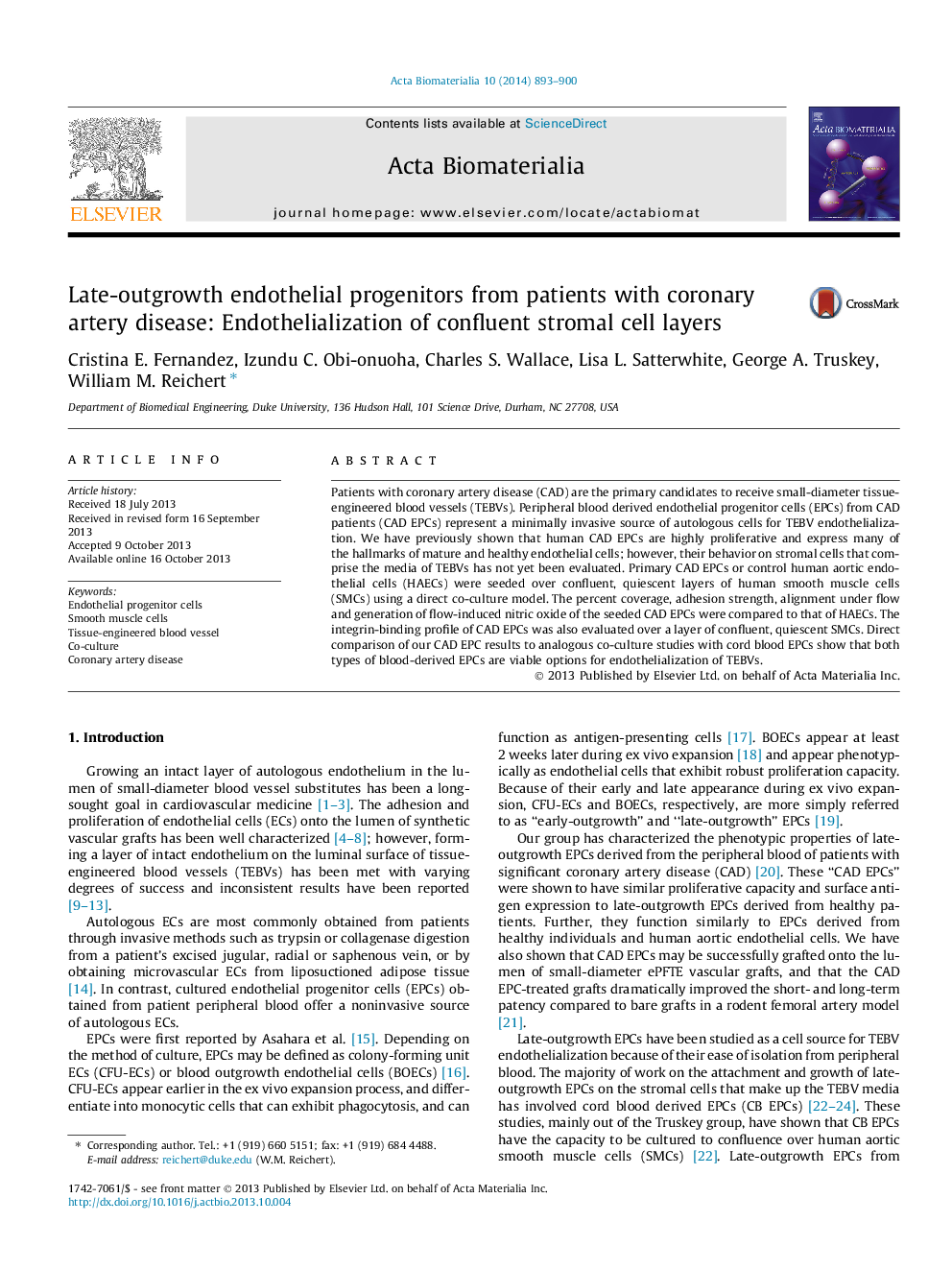| Article ID | Journal | Published Year | Pages | File Type |
|---|---|---|---|---|
| 10159357 | Acta Biomaterialia | 2014 | 8 Pages |
Abstract
Patients with coronary artery disease (CAD) are the primary candidates to receive small-diameter tissue-engineered blood vessels (TEBVs). Peripheral blood derived endothelial progenitor cells (EPCs) from CAD patients (CAD EPCs) represent a minimally invasive source of autologous cells for TEBV endothelialization. We have previously shown that human CAD EPCs are highly proliferative and express many of the hallmarks of mature and healthy endothelial cells; however, their behavior on stromal cells that comprise the media of TEBVs has not yet been evaluated. Primary CAD EPCs or control human aortic endothelial cells (HAECs) were seeded over confluent, quiescent layers of human smooth muscle cells (SMCs) using a direct co-culture model. The percent coverage, adhesion strength, alignment under flow and generation of flow-induced nitric oxide of the seeded CAD EPCs were compared to that of HAECs. The integrin-binding profile of CAD EPCs was also evaluated over a layer of confluent, quiescent SMCs. Direct comparison of our CAD EPC results to analogous co-culture studies with cord blood EPCs show that both types of blood-derived EPCs are viable options for endothelialization of TEBVs.
Related Topics
Physical Sciences and Engineering
Chemical Engineering
Bioengineering
Authors
Cristina E. Fernandez, Izundu C. Obi-onuoha, Charles S. Wallace, Lisa L. Satterwhite, George A. Truskey, William M. Reichert,
